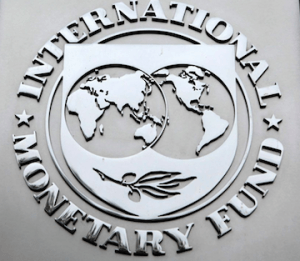IMF announces $650b SDR to boost world economy
 The International Monetary Fund (IMF) has today announced what it describes as the largest allocation of Special Drawing Rights (SDRs) to the tune of $650 billion, to help the global economy to recover.
The International Monetary Fund (IMF) has today announced what it describes as the largest allocation of Special Drawing Rights (SDRs) to the tune of $650 billion, to help the global economy to recover.
According to the IMF, the SDR is an international reserve asset it has created to supplement the official reserves of its member countries.
“The SDR is not a currency. It is a potential claim on the freely usable currencies of IMF members. As such, SDRs can provide a country with liquidity. A basket of currencies defines the SDR: the US dollar, Euro, Chinese Yuan, Japanese Yen, and the British Pound,” it said on its website.
In a statement copied to Ghana Business News, Ms Kristalina Georgieva, the Managing Director of the Fund was quoted saying, “The largest allocation of Special Drawing Rights (SDRs) in history—about $650 billion—comes into effect today. The allocation is a significant shot in the arm for the world and, if used wisely, a unique opportunity to combat this unprecedented crisis.
“The SDR allocation will provide additional liquidity to the global economic system – supplementing countries’ foreign exchange reserves and reducing their reliance on more expensive domestic or external debt. Countries can use the space provided by the SDR allocation to support their economies and step up their fight against the crisis,” she added.
The Fund indicates that SDRs are being distributed to countries in proportion to their quota shares in the IMF. This means about $275 billion is going to emerging and developing countries, of which low-income countries will receive about $21 billion – equivalent to as much as six per cent of GDP in some cases.
“SDRs are a precious resource and the decision on how best to use them rests with our member countries. For SDRs to be deployed for the maximum benefit of member countries and the global economy, those decisions should be prudent and well-informed,” Ms Georgieva said.
The IMF MD, notes that to support countries, and help ensure transparency and accountability, the Fund is providing a framework for assessing the macroeconomic implications of the new allocation, its statistical treatment and governance, and how it might affect debt sustainability. It will also provide regular updates on all SDR holdings, transactions, and trading – including a follow-up report on the use of SDRs in two years’ time.
“To magnify the benefits of this allocation, the IMF is encouraging voluntary channeling of some SDRs from countries with strong external positions to countries most in need. Over the past 16 months, some members have already pledged to lend US$24bn, including US$15 billion from their existing SDRs, to the IMF’s Poverty Reduction and Growth Trust, which provides concessional loans to low-income countries. This is just a start, and the IMF will continue to work with our members to build on this effort.
“The IMF is also engaging with its member countries on the possibility of a new Resilience and Sustainability Trust, which could use channeled SDRs to help the most vulnerable countries with structural transformation, including confronting climate-related challenges. Another possibility could be to channel SDRs to support lending by multilateral development banks,” she added.
By Emmanuel K. Dogbevi
Copyright ©2021 by NewsBridge Africa
All rights reserved. This article or any portion thereof may not be reproduced or used in any manner whatsoever without the express written permission of the publisher except for the use of brief quotations in reviews.
